

How To Come Up With A Great Title For Your Book (Or Story Or Poem) Coming up with a killer book title is hard.

There’s a lot at stake in a title: It’s your readers’ first impression of your work, and it’s got to be evocative, unique, and precise. The pressure can be overwhelming! But we at Writer’s Relief have got some great tips to help you come up with the perfect title for your novel or your nonfiction book. And you can apply these concepts to your short stories and poetry as well. With a little preparation and brainstorming, you’ll land on the perfect title for your book! Elements Of Great Book Titles Poetic language. Action words. Inherent mystery/conflict. Consider Midnight in the Garden of Good and Evil: It’s a long title, but it’s so good. Character’s names. Place names. Quirky titles. The one-word title. Council of Elrond » LotR News & Information. Need a special, tailor-made language for that new work of fiction?
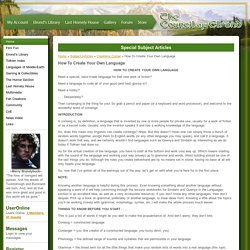
Need a language to code all of your good (and bad) gossip in? Need a hobby? . . . Stop Glorifying the First Draft and Finish It - Alyssa Hollingsworth. As a mentee for writers, a critique partner, and person who generally has a lot of friends in very different stages of the author business, I end up talking to a lot of people about their first drafts.

Especially their first-manuscript first drafts. The attitude of many first-manuscript writers can be summed up nicely in this graphic, which I’ve grabbed off Pinterest: There’s something very sweet and appealing about this. It reminds me of the sentimental early days of writing, and how every part of it felt like a precious commission, before writing became a hurricane of habit. And there’s merit in that. Writing The Perfect Scene: Advanced Fiction Writing Tips. Having trouble making the scenes in your novel work their magic?
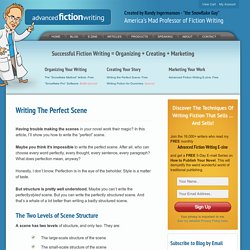
In this article, I’ll show you how to write the “perfect” scene. How to Write What's Not Written (Subtext) I've been seeing a number of stories lately that are lacking in subtext.
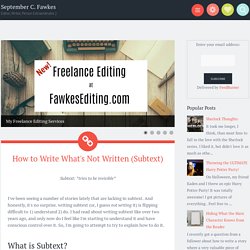
And honestly, it's no surprise. writing subtext (or, I guess not writing it) is flipping difficult to 1) understand 2) do. 9 Ways To Build Suspense ~ Fiction Writing - Crime Writer Sue Coletta. How to Plot a Story (Even If Plotting Scares You Silly): 7 Sure-Fire Ways. How to Create and Control Tone, September C. Fawkes. A Guide to Dramatic, Situational and Verbal Irony. We know it when we see it, but few of us can articulate what irony really is without relying on half-remembered lyrics from the 1995 Alanis Morissette song, “Ironic.”

But it’s critical for writers to understand irony, which can add depth to conflict — or, in certain cases, make conflict feel hackneyed and stale. In this article, we will define and analyze different types of irony, and examine how to use irony successfully in your writing. Finally, we’ll dispel the notion that rain on your wedding day is ironic — a concept that, ironically enough, isn’t ironic at all. CONTENTS: What is irony? Dramatic Irony Situational Irony Verbal Irony Quiz Yourself: How Well Do You Know Irony? Irony is a storytelling tool used to create contrast between how things seem and how they really are beneath the surface. Irony is not synonymous with sarcasm, coincidence, or bad luck. Functions of Dramatic Irony In the first scene, we experience momentary surprise.
Crafting a Killer Undercurrent for Your Story, September C. Fawkes. Picking a Juicy Secret to Jazz Up Your Character – Writingeekery. Novelists - how to use MS Word as a powerful editing tool. US author Maria Grace mentioned on facebook about using MS Word as an editing tool.

I was intrigued so I asked her to come on the blog and tell us all about it. Over to Maria! Thanks so much for hosting me Deborah. 25 Steps To Edit The Unmerciful Suck Out Of Your Story. I’m editing a book right now.
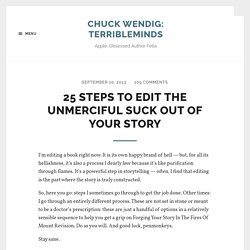
It is its own happy brand of hell — but, for all its hellishness, it’s also a process I dearly love because it’s like purification through flames. It’s a powerful step in storytelling — often, I find that editing is the part where the story is truly constructed. So, here you go: steps I sometimes go through to get the job done. Other times: I go through an entirely different process. Depicting Child Characters. Portraying child characters can be one of the biggest challenges of storytelling.
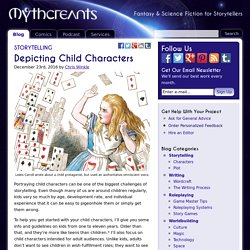
Even though many of us are around children regularly, kids vary so much by age, development rate, and individual experience that it can be easy to pigeonhole them or simply get them wrong. To help you get started with your child characters, I’ll give you some info and guidelines on kids from one to eleven years. Older than that, and they’re more like teens than children.* I’ll also focus on child characters intended for adult audiences. Unlike kids, adults don’t want to see children in wish-fulfillment roles; they want to see kids that feel realistic. Unfortunately, creating child characters that feel realistic to every adult is probably impossible. “Are you kidding me?” If a writer wrote these lines in a book and attributed them to characters the same age as the real kids, doubtless many adult readers would find it unbelievable. General Characteristics of Children Children Have Instincts 1-2 Years Old.
Myths, Creatures, and Folklore. FAQ on Writing Signed Language - wilds in my head.
Writing: Words. Writing: Tools.